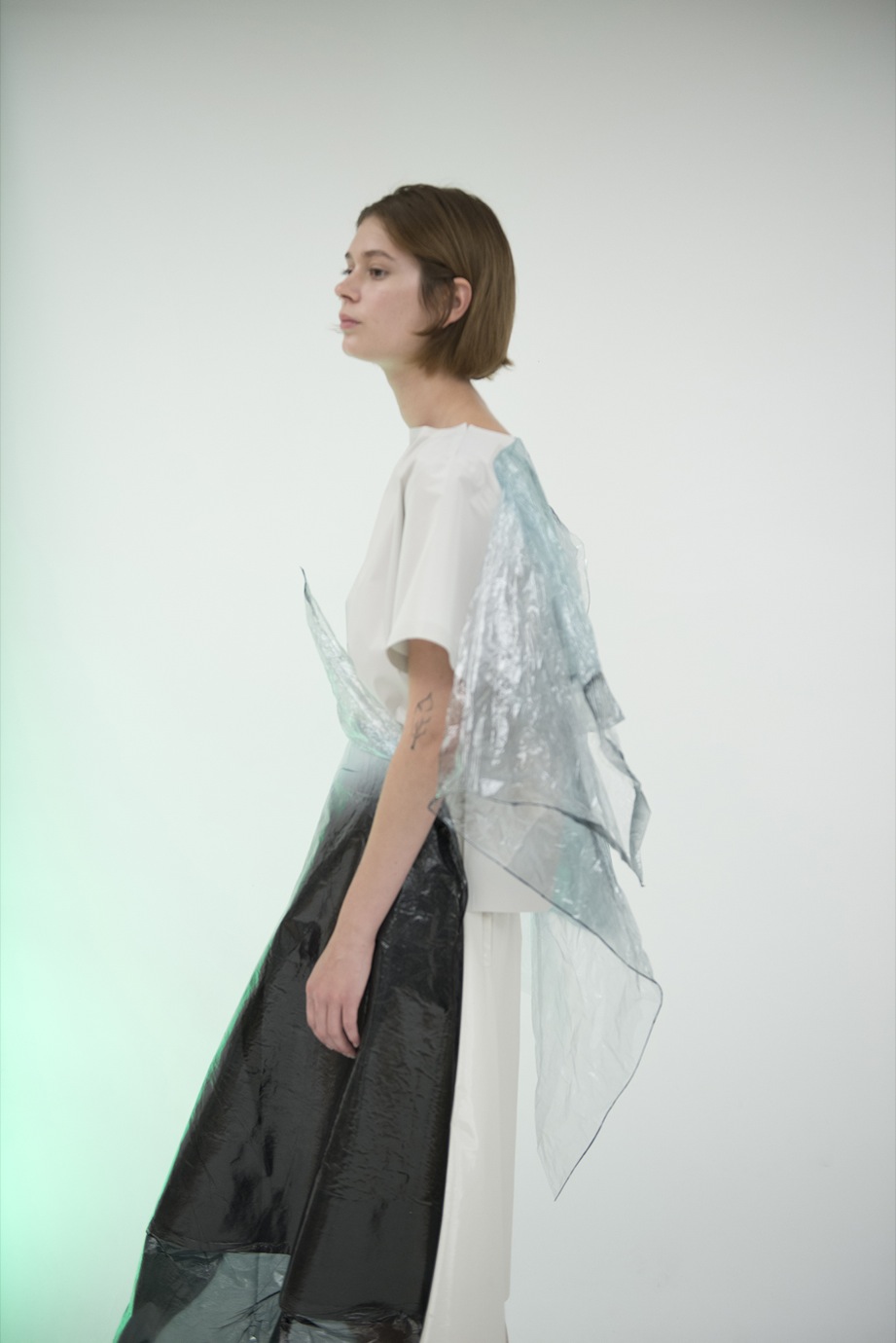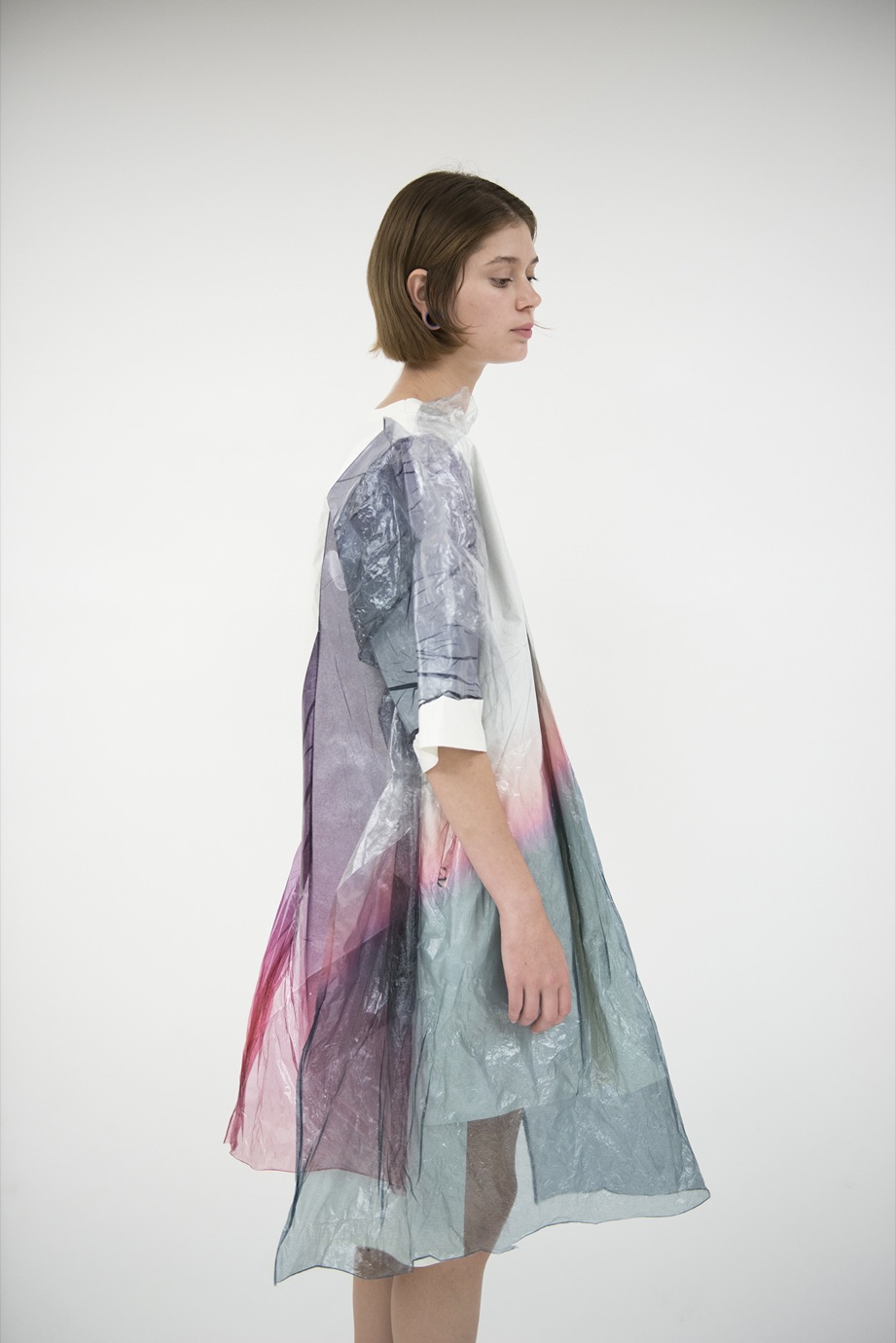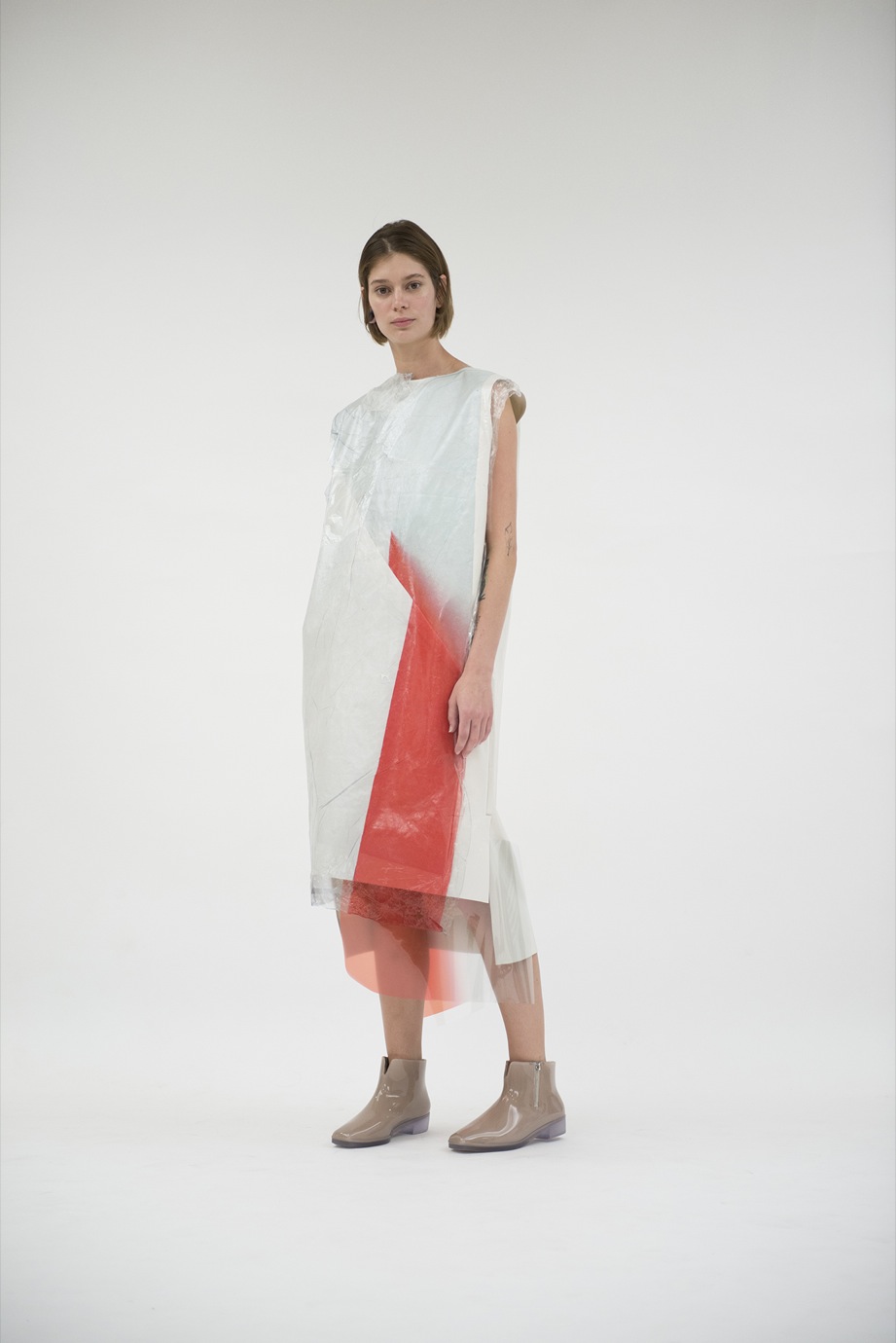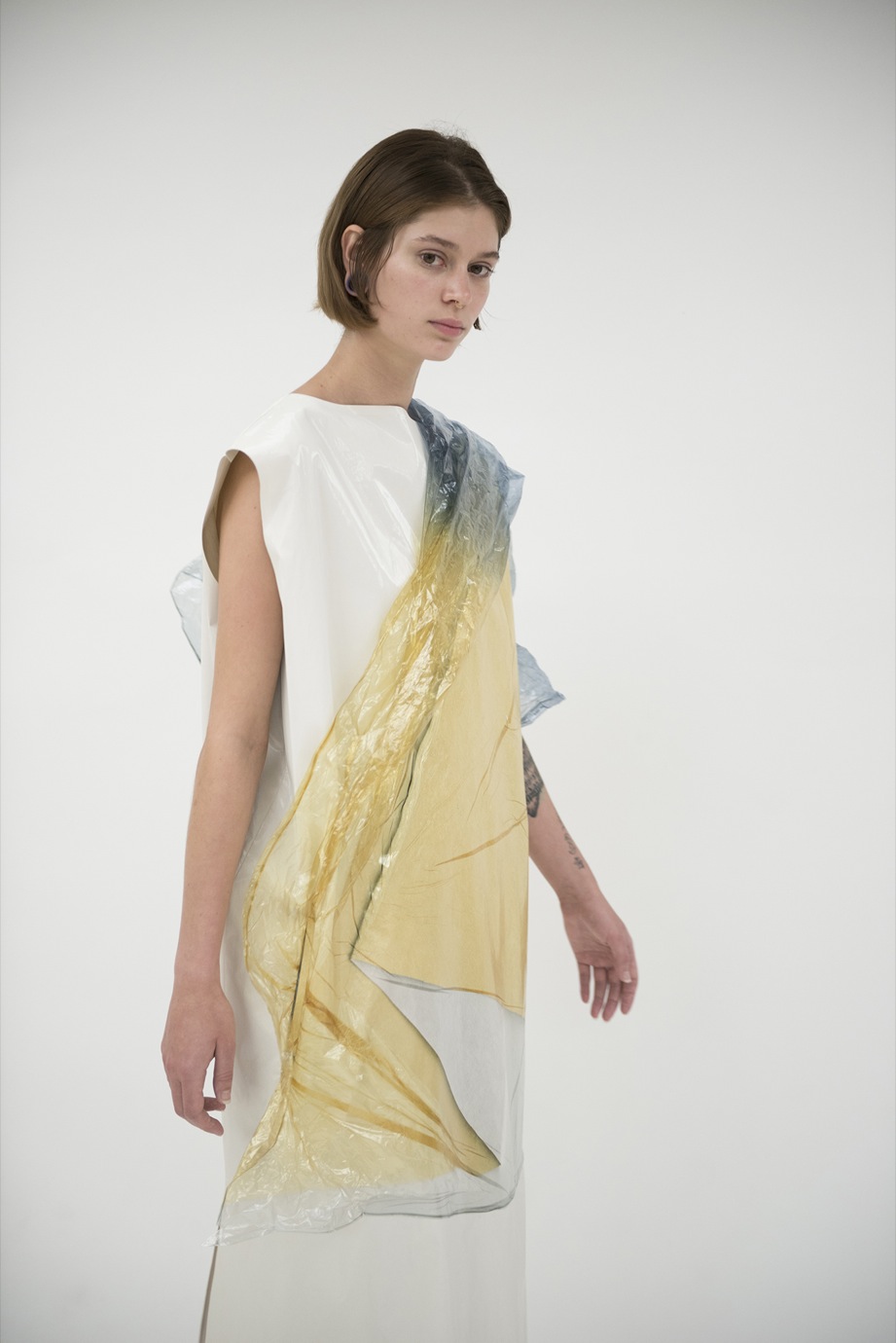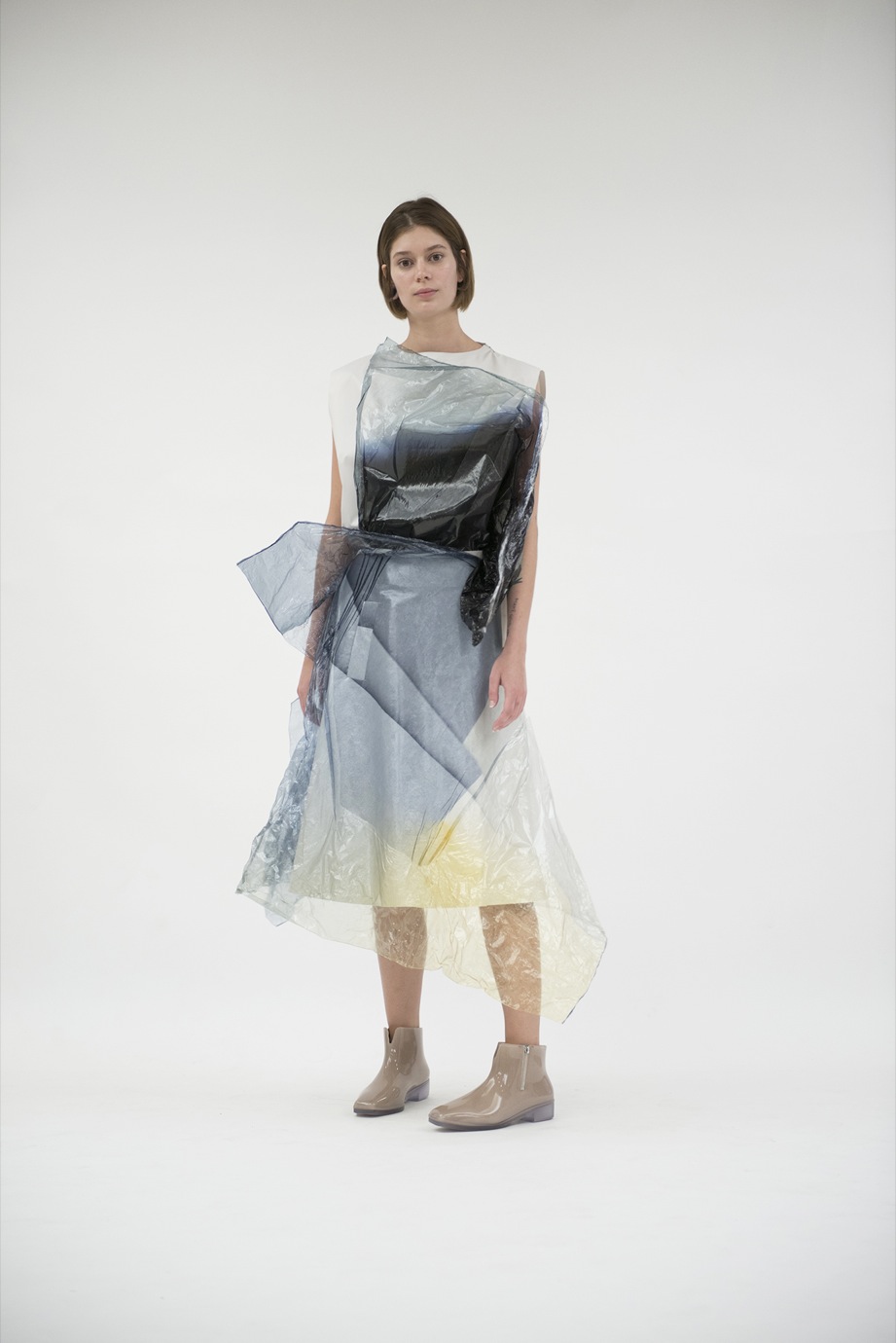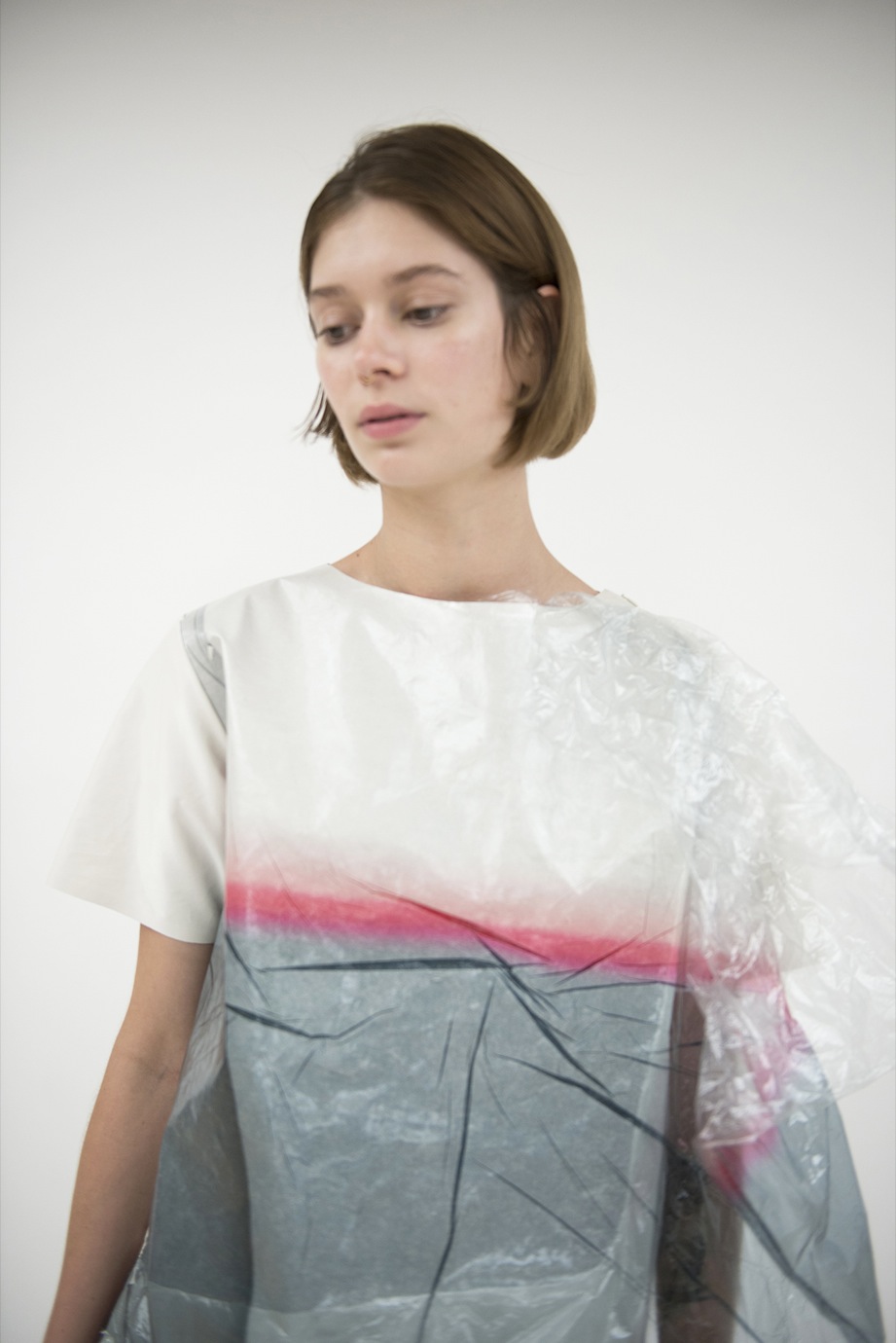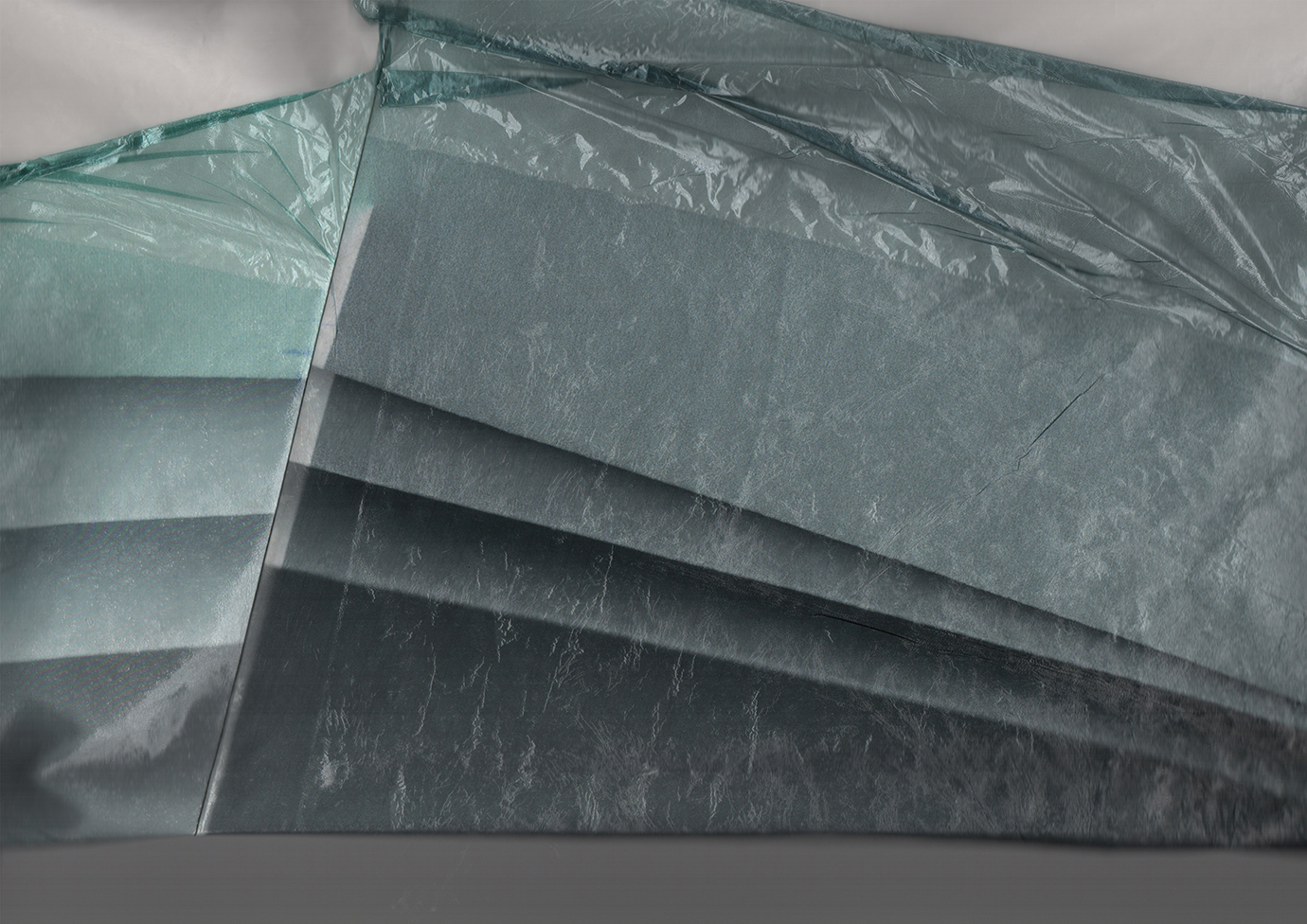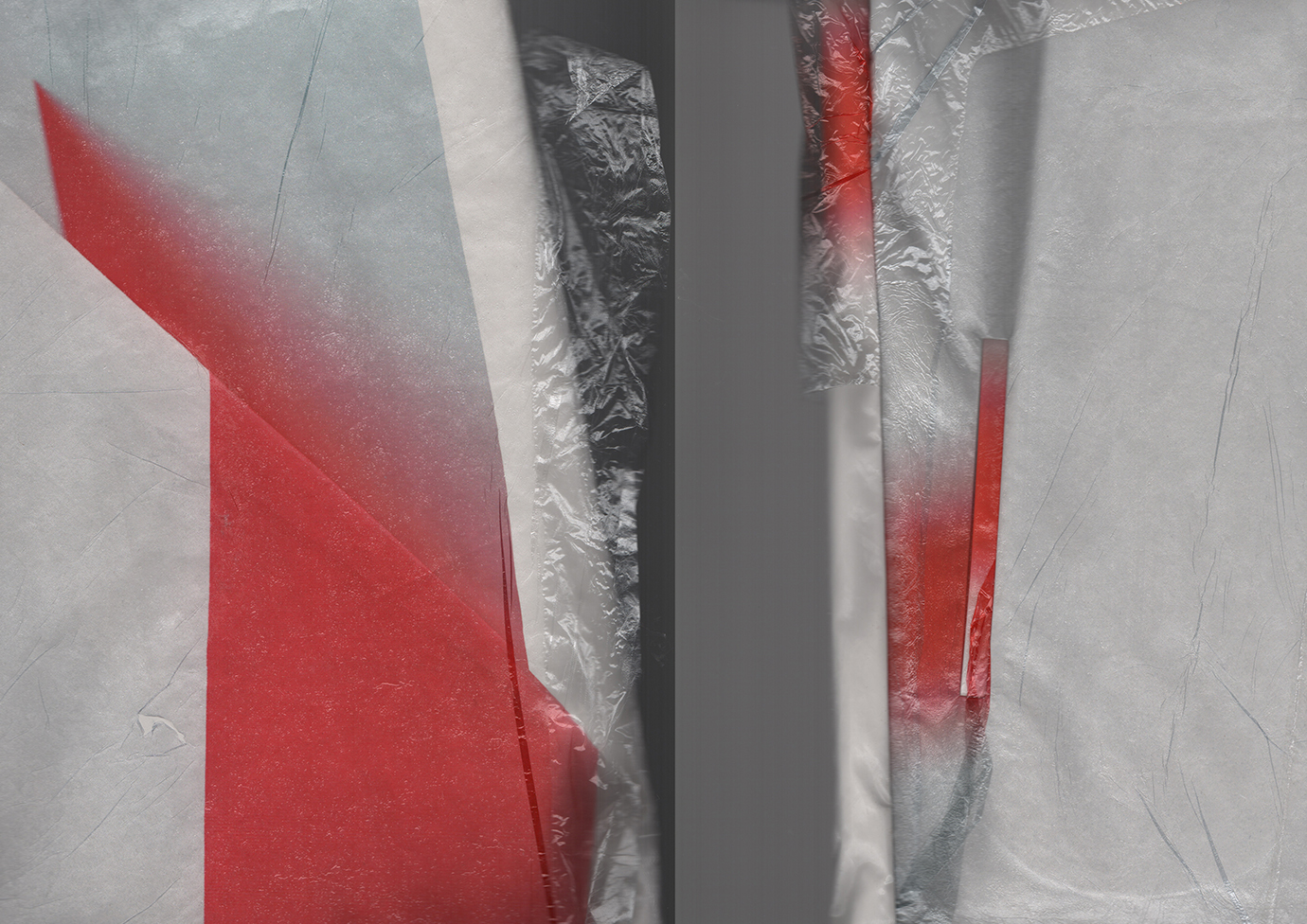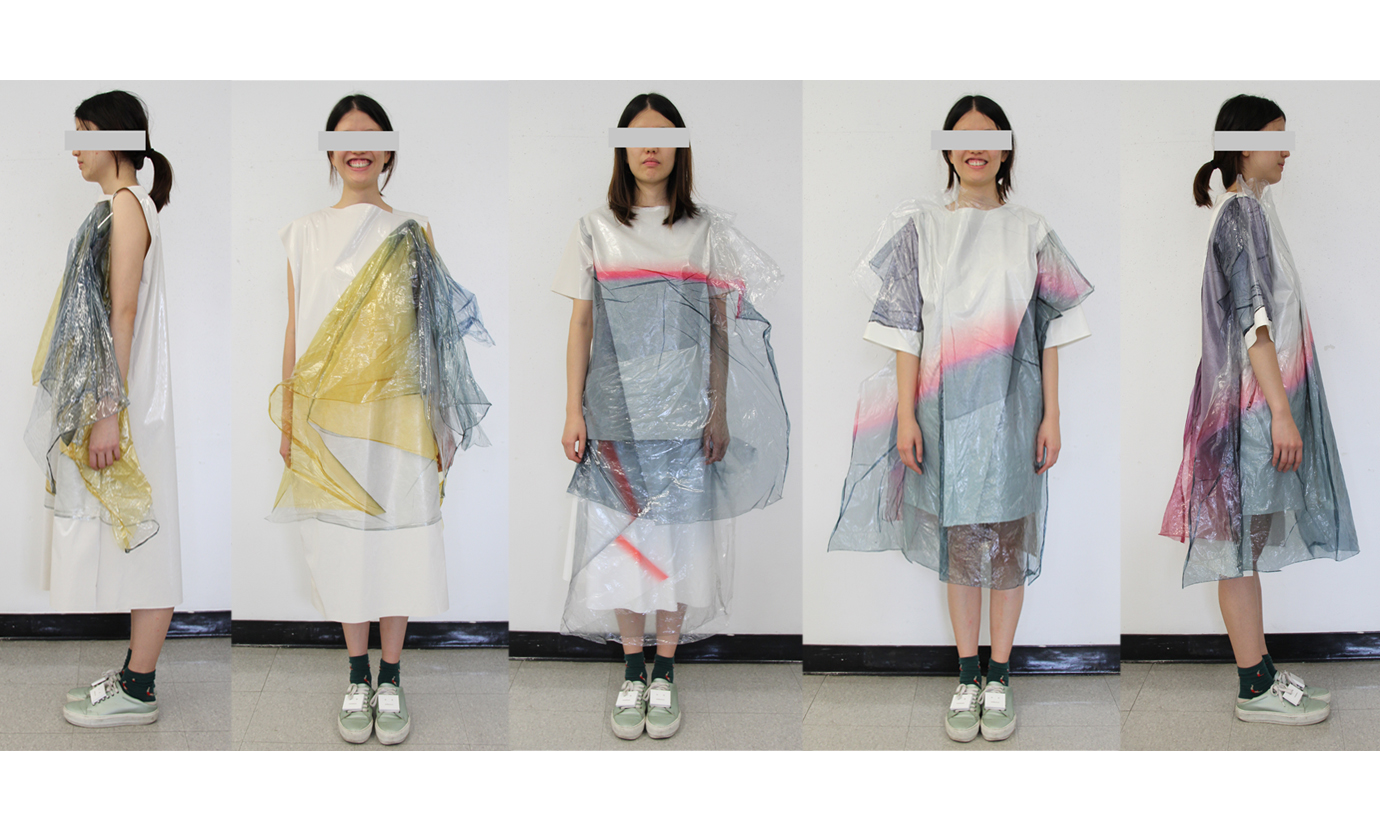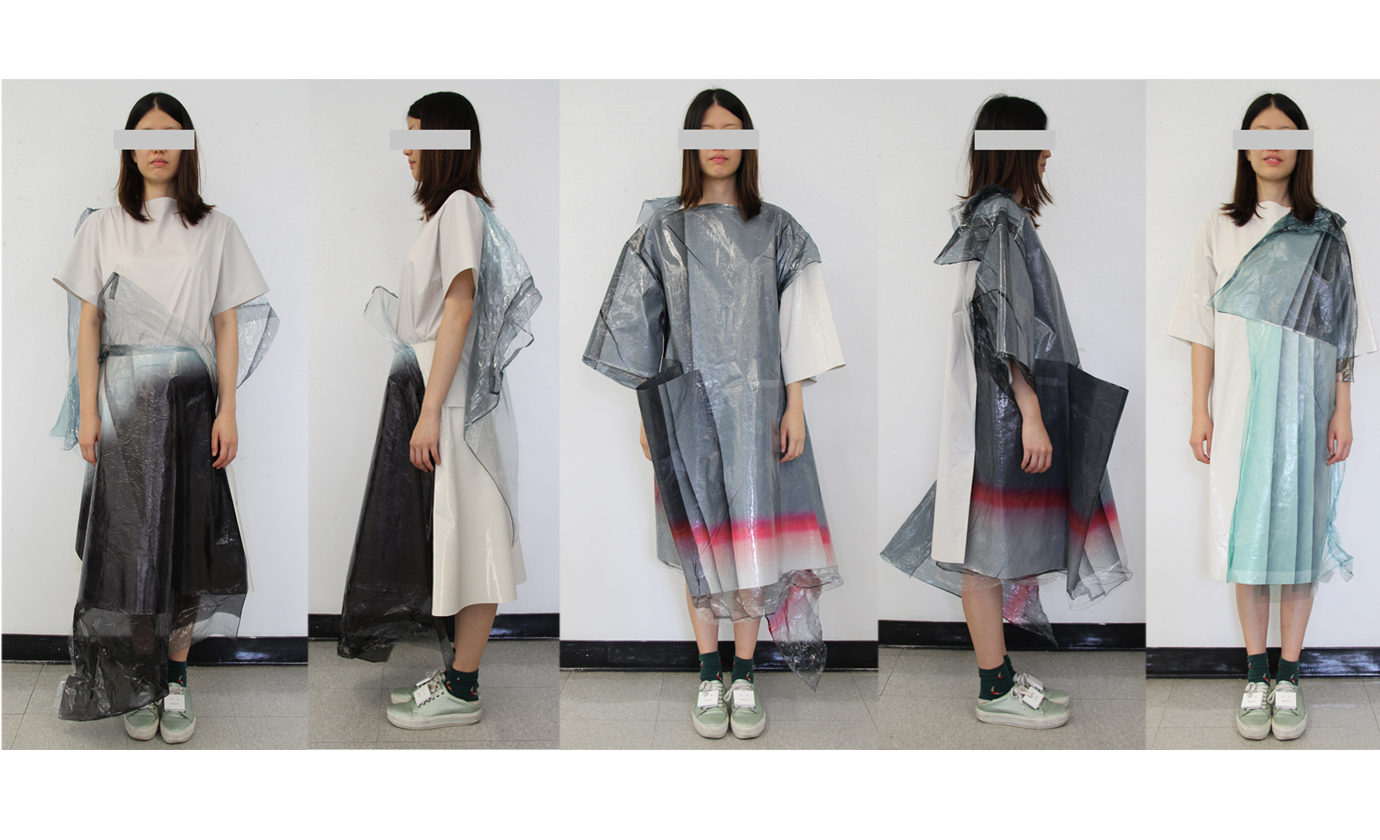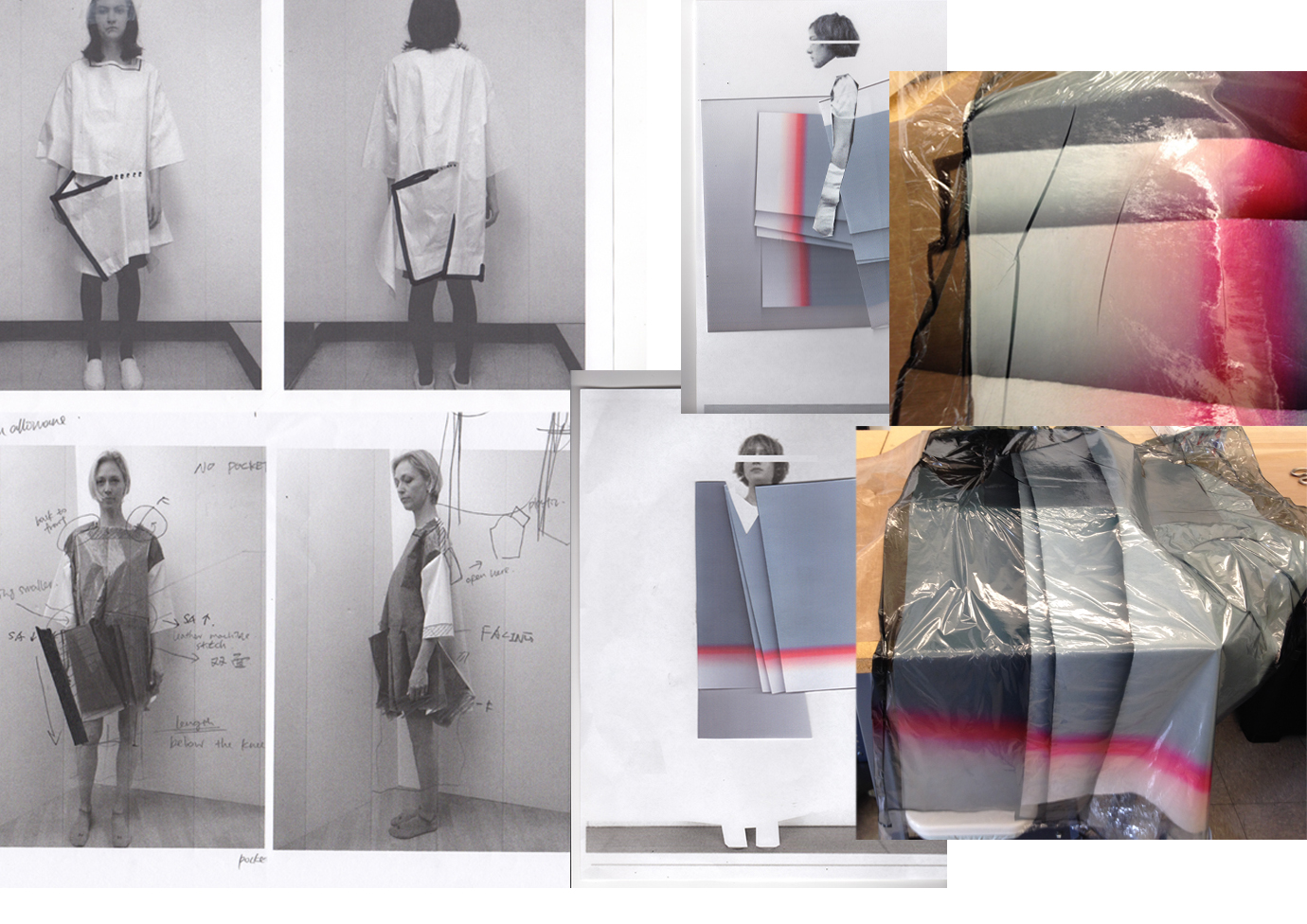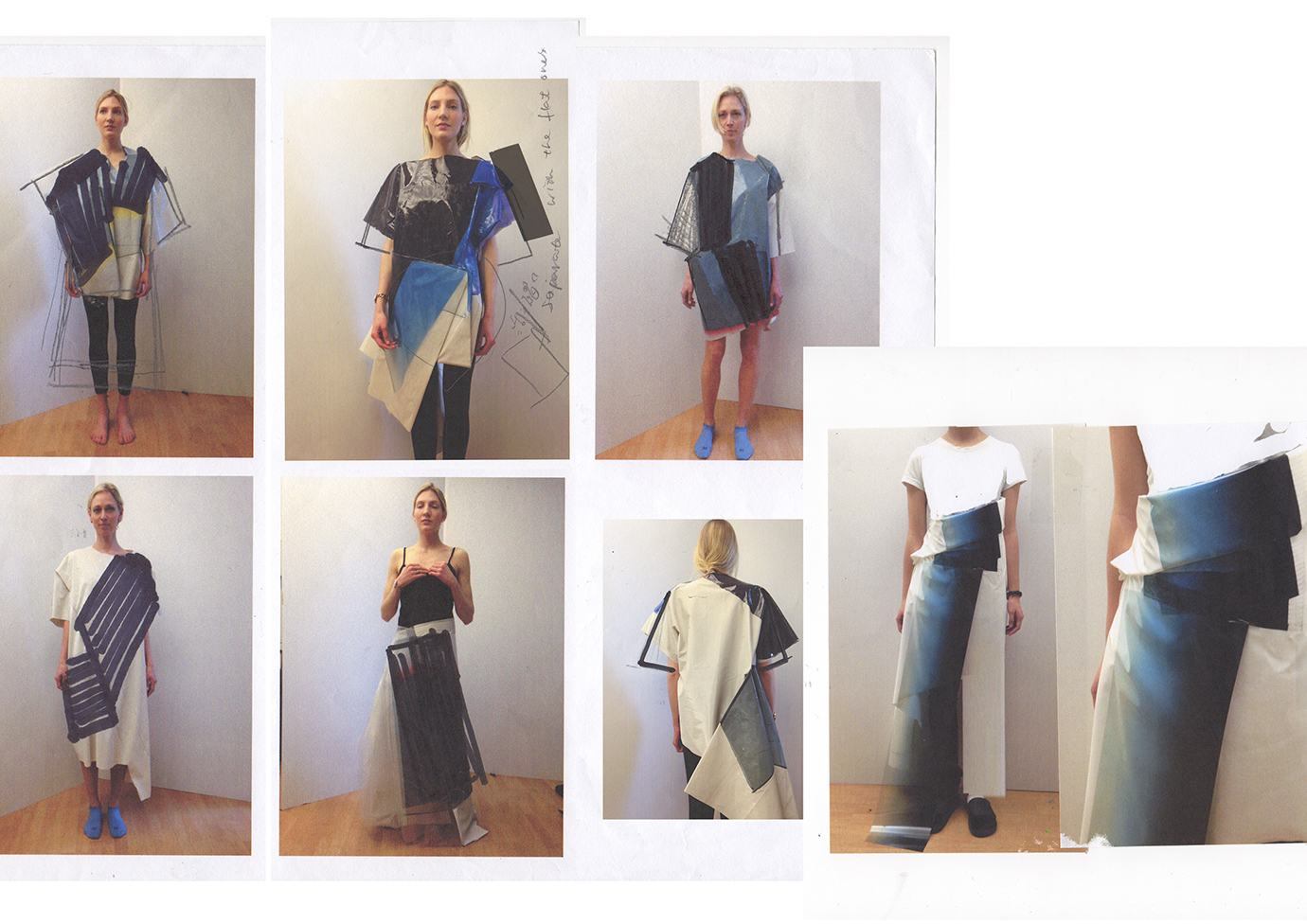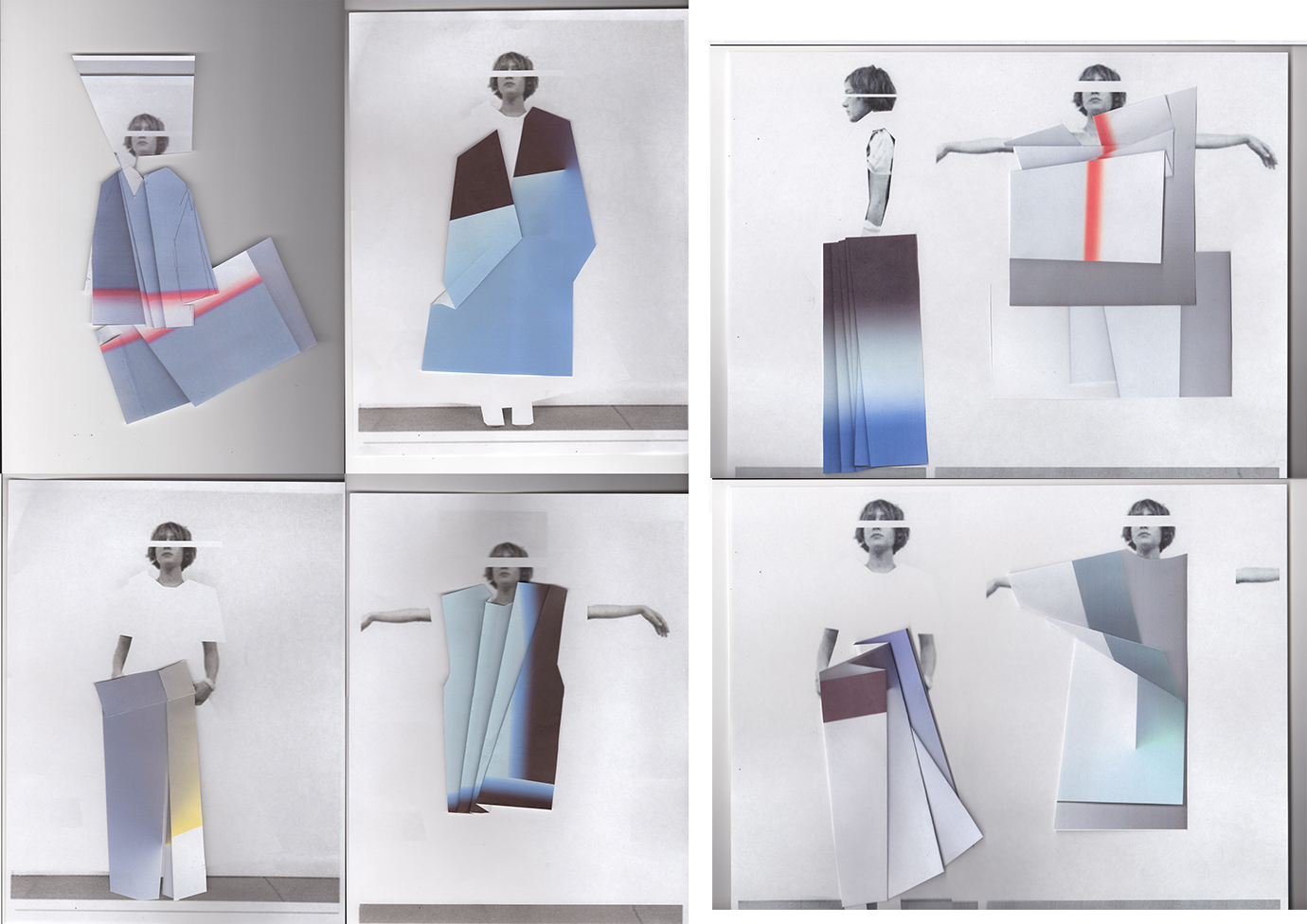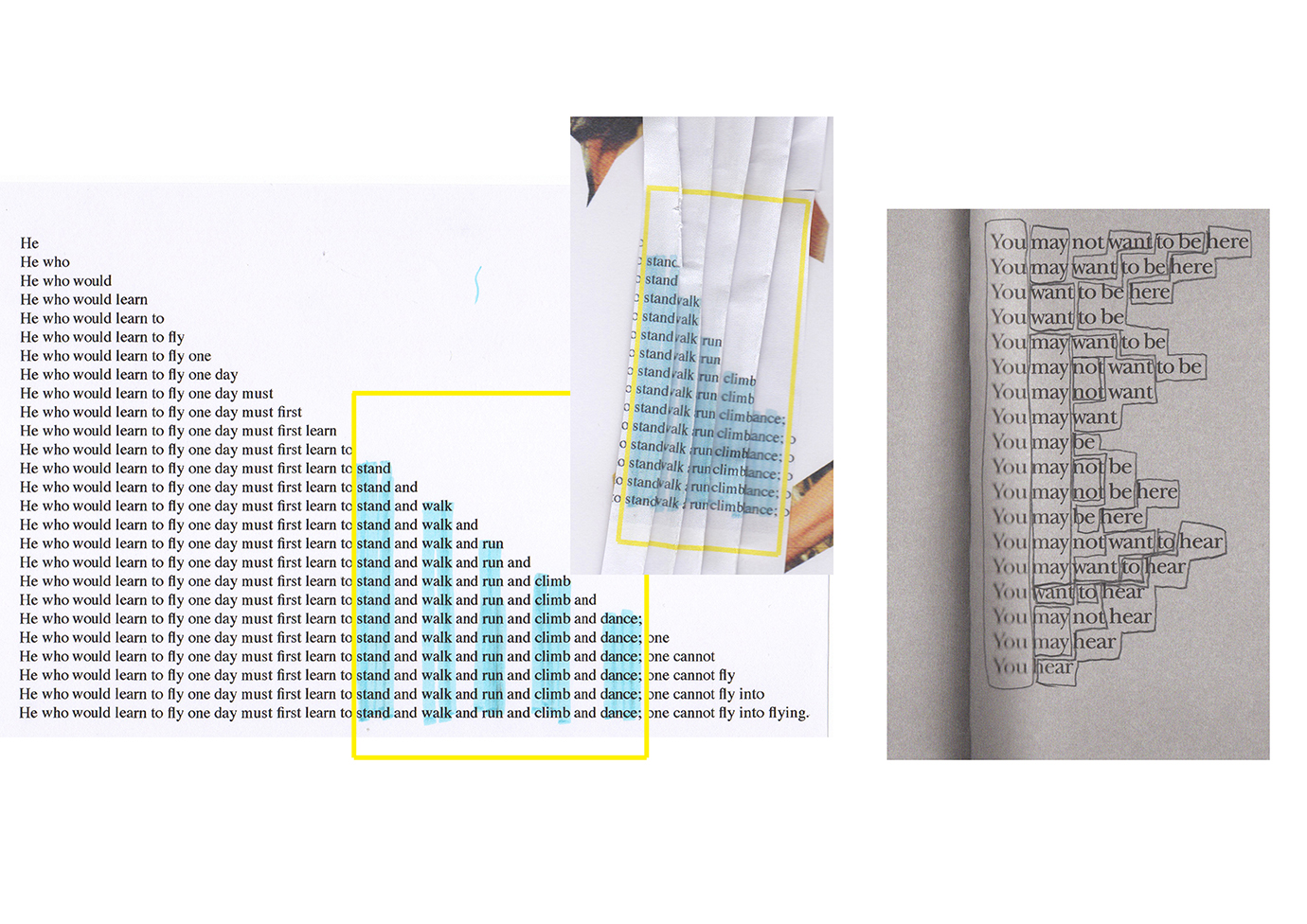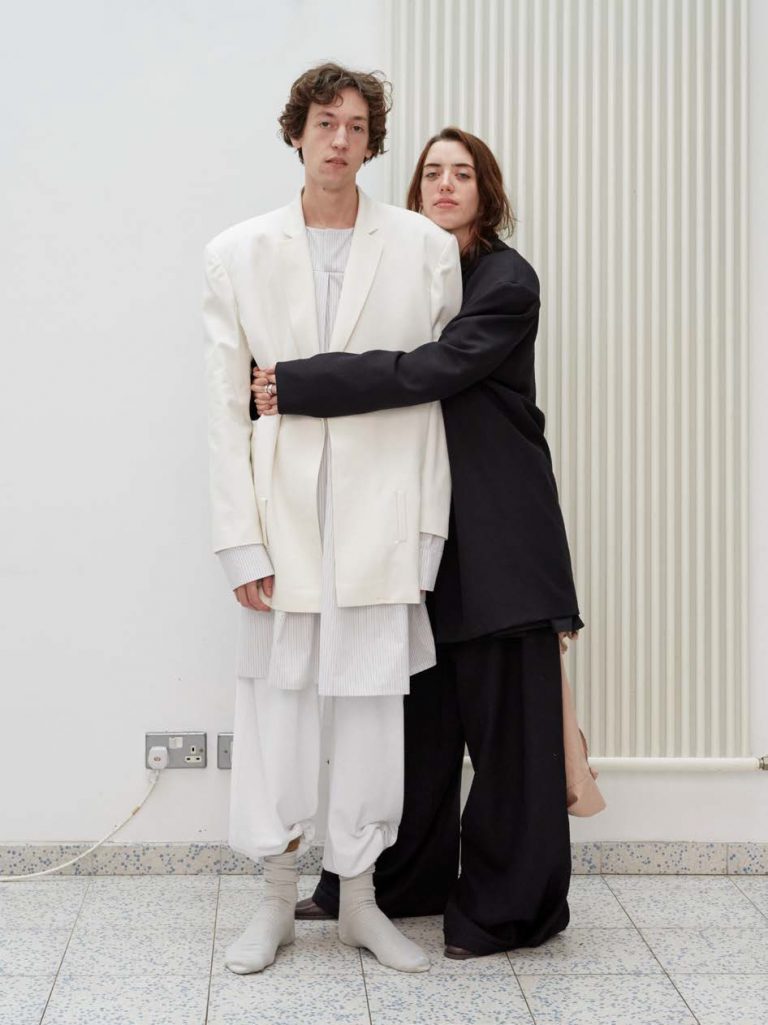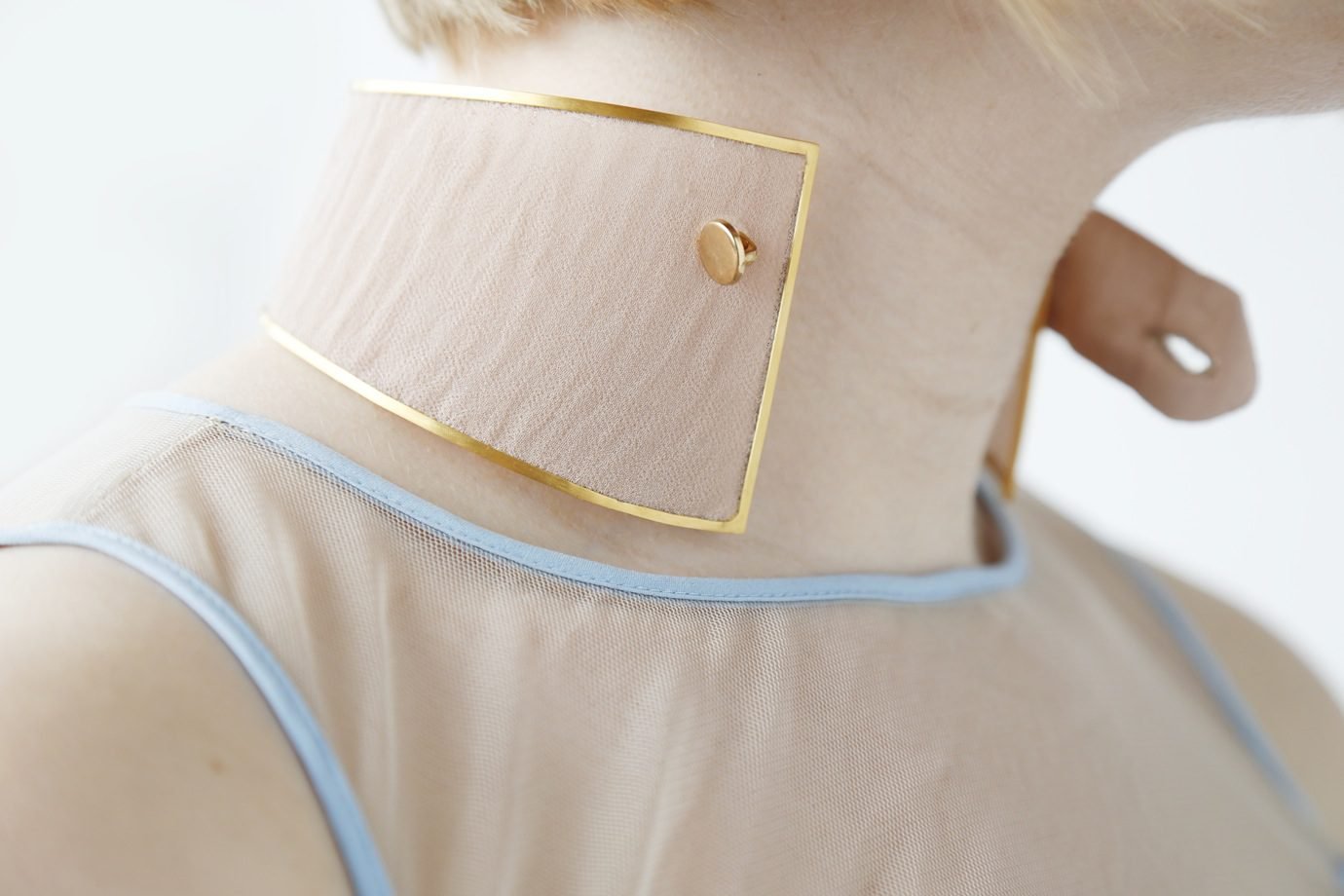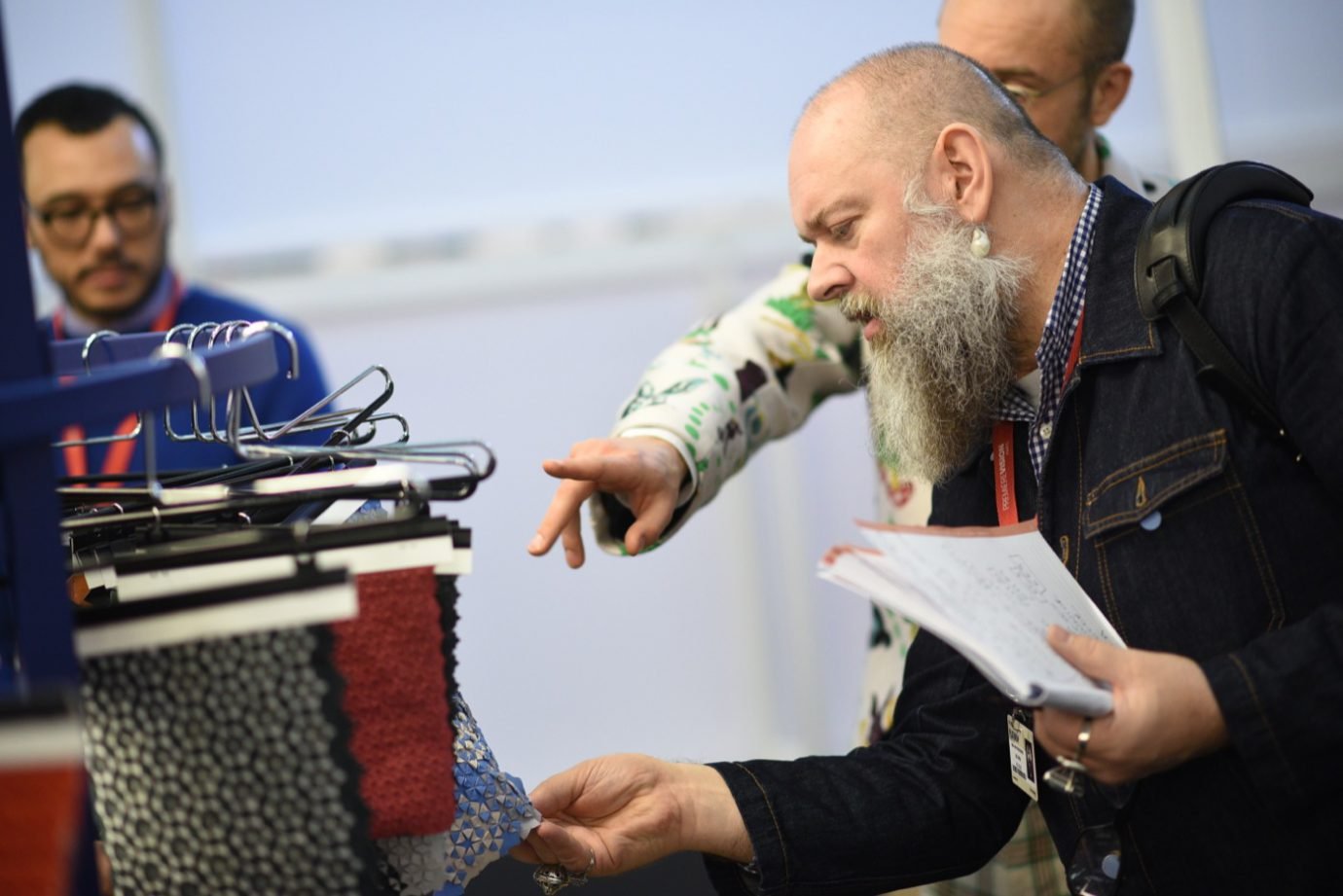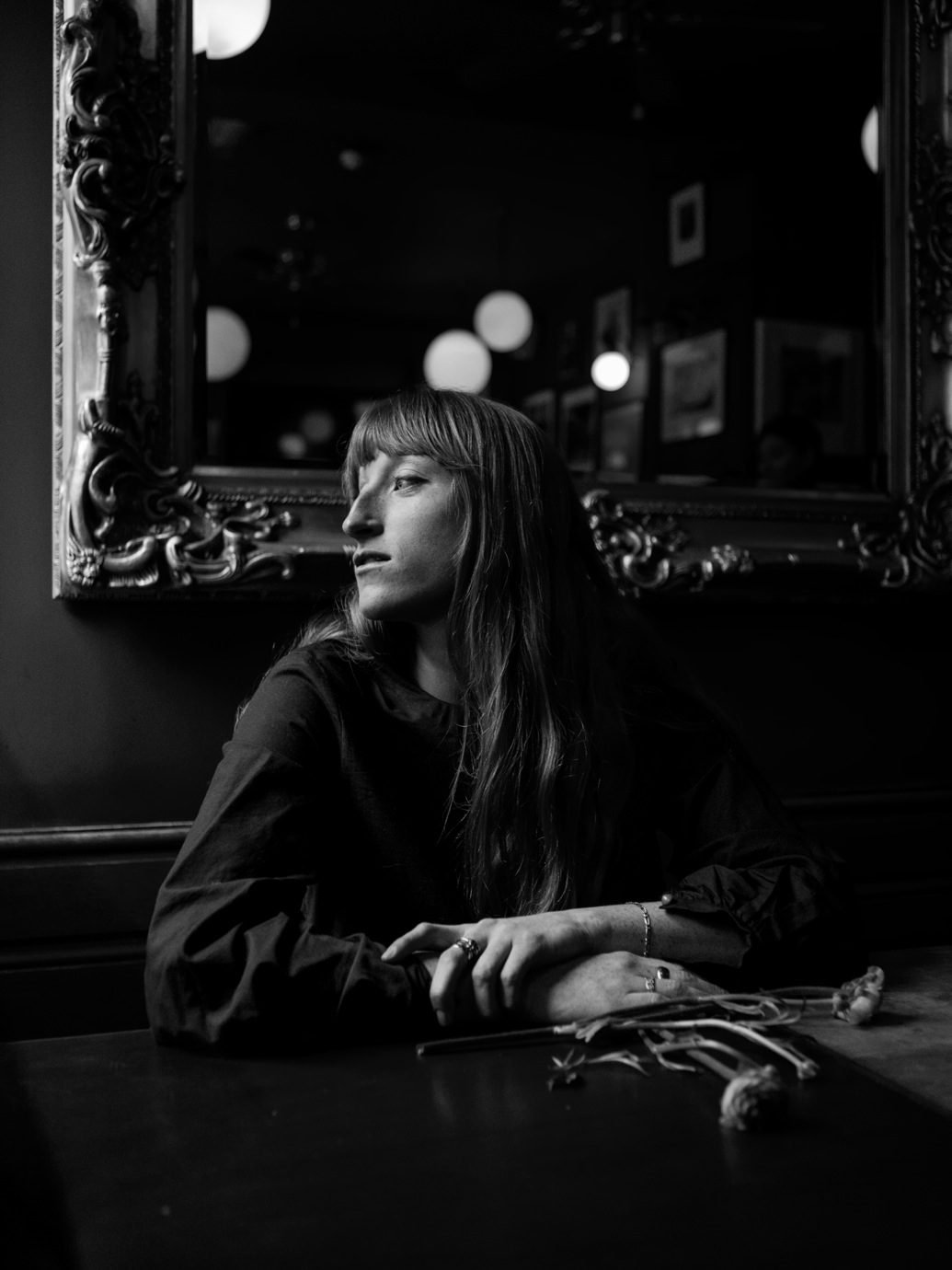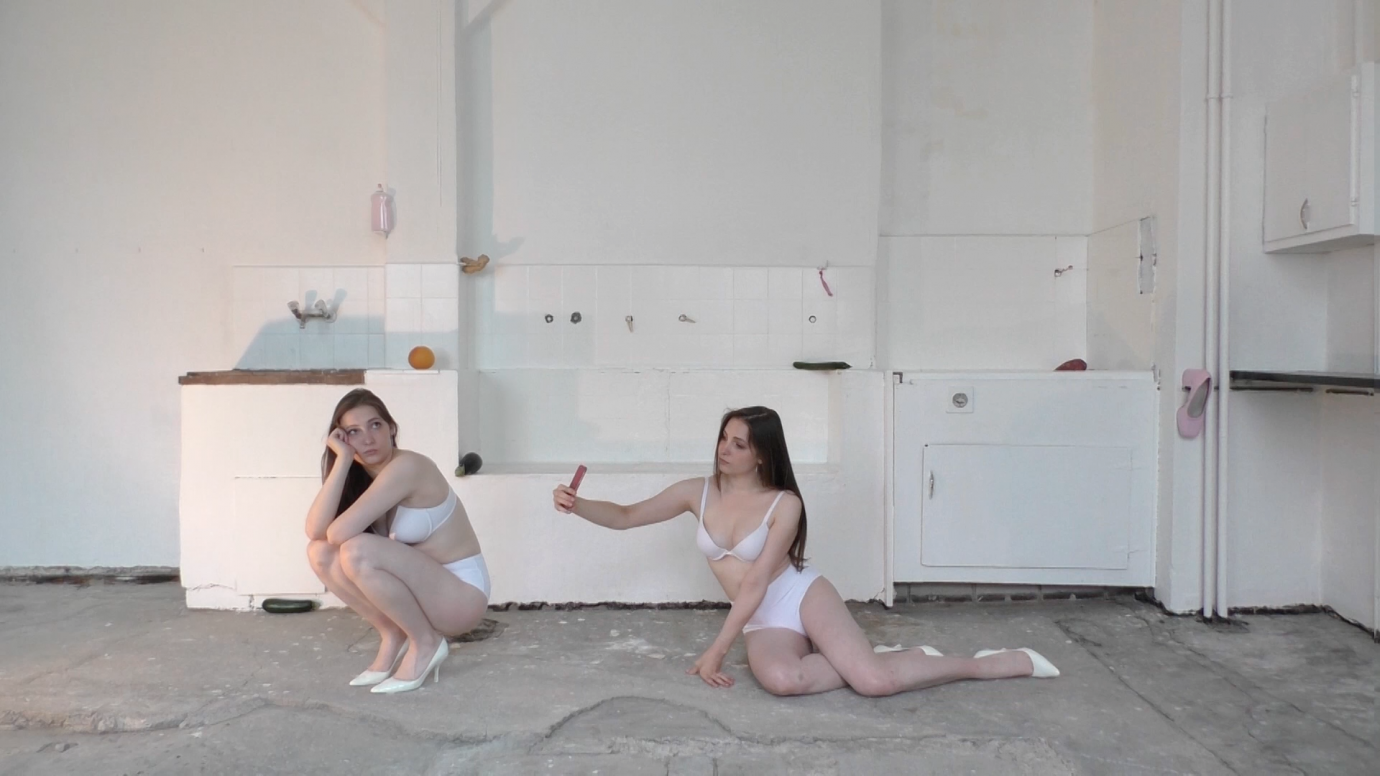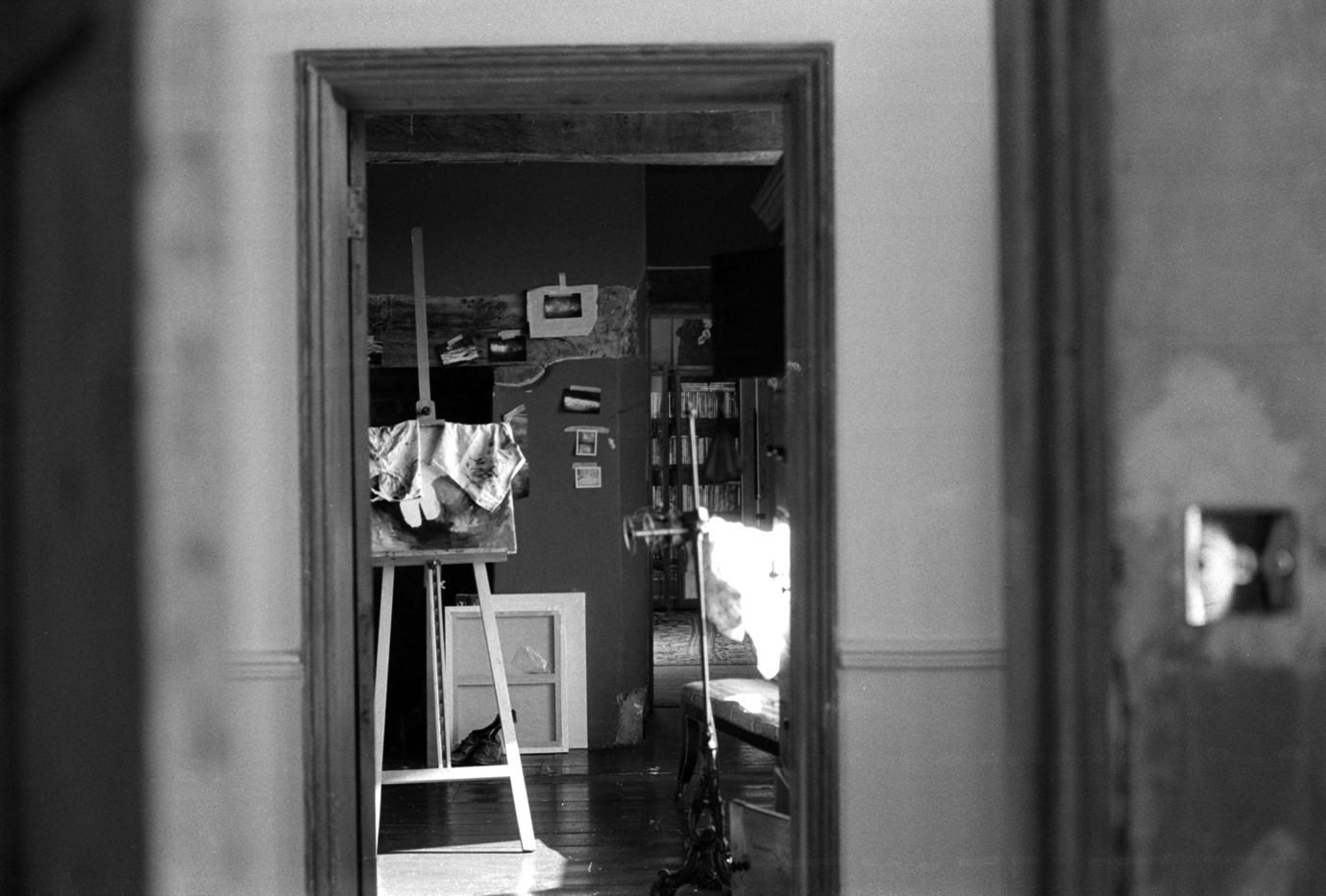At what point did you realize you were interested in fashion?
I have always been interested in it, especially because my father is an artist who concentrates on oil painting, so I grew up surrounded by it. He definitely influenced me. But unlike him, I sometimes can’t focus on the small details. I think that’s why I enjoy making garments, because it’s about the whole image. When I started experimenting at Parsons, I was learning what I liked and what felt natural to me. But even now, I don’t feel like a fashion designer. In fact, I like to keep a little bit of distance from fashion itself.
The concept for your thesis, ‘The Fold’ was influenced by a Nietzsche quote.
That’s right: ‘He who would learn to fly one day must first learn to stand and walk and run and climb and dance; one cannot fly into flying.’ I think I liked the way the words fell. My collection is mainly focused on the process, which I try to shorten, but still highlight in every fold. I always prefer to express my ideas directly and not overthink them. I like simple concepts.




